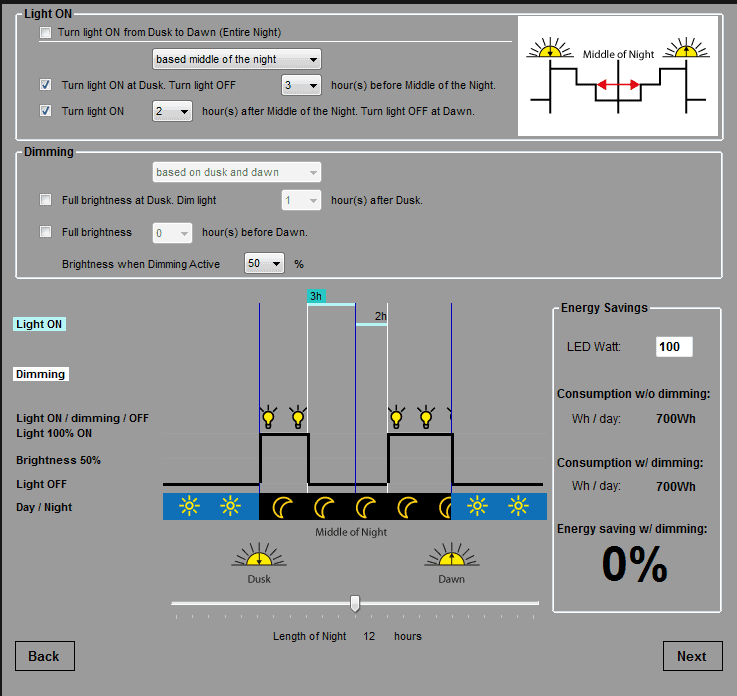The difference is reference points for load or dimming timers to give you more options save energy and improve user experience.
CIS family and CX family controllers intelligently detect day and night using the PV array voltage. Night is detected when PV voltage drops below a low level during dusk, and day is detected when PV voltage rises above that low level during dawn. For example, CIS family controllers in 12V systems detect night when PV voltage drops below 8V, and they detect day when PV voltage rises above 9.5V. Two slightly different levels ensures a smooth transition during cloudy weather.
These Phocos controllers also intelligently calculate the middle of the night as halfway between night detection and day detection. This is updated each night for high accuracy throughout the seasons. There is no real-time clock so there may be variation between true midnight and what the controller measures as the middle of the night.
When “dusk to dawn” is selected as a reference, the load timers can be set to turn the load on (or dim) for a selectable number of hours after dusk and a selectable number of hours before dawn. Alternatively, the load can be on the entire night.
When “middle of the night” is selected as a reference, the load timers can be set to turn the load off (or dim) for a selectable number of hours before the middle of the night and a selectable number of hours after the middle of the night.
For example, in a CIS controller, if evening hours are set as “3” and morning hours as “2” with a “middle of the night” reference, the controller will turn the load off three hours before the middle of the night and back on two hours after the middle of the night. (see screenshot of CISCOM setting below).
Even if the hours selected exceed the length of night, the controller will still shut off the load at dawn and turn on the load at dusk.










